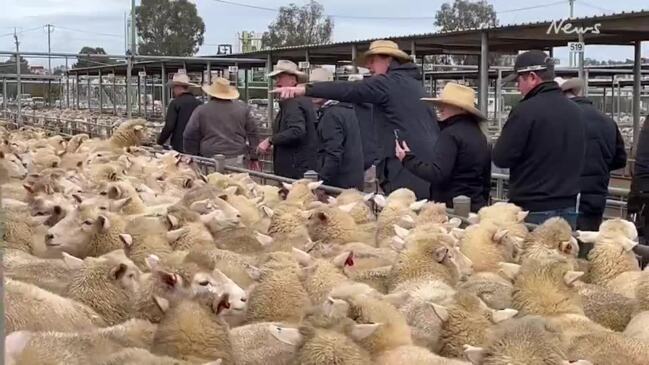Sheep vendors cop tough market
Vendors are copping big discounts and drought-like prices at market as large yardings of lambs sell cheap.

Little confidence and drought-like prices for stock when there is still feed around have gouged open the trading divide between buyers and sellers.
It was highlighted by the mass listing of young Merino wether lambs in the Riverina last week – multiple lots not receiving bids and only a few lots selling.
This sale was viewed as a test of the store lamb market on the verge of spring, and the big lesson to come out of it was that producers intent on selling stock would have to be prepared to meet the market.
Setting what seems like a fair price reserve from a breeders perspective is not going to hold this season, as the usual matrix of reasonable feed and water supplies supporting demand and creating some level of premium for store stock has been distorted.
Elders agent Andrew Low, Hay, said they had used a rate of 150 cents per kilogram liveweight when setting reserves for the young Merino lambs listed on AuctionsPlus last week.
It was the line in the sand, and in theory, it probably seemed about right. Go back 12 months ago, and the average for young Merino lambs on the box was 345c/kg liveweight or $101 on an average size of 29kg.
Dropping back to 150c/kg represented a 57 per cent drop in price, and in percentage terms, that is in the ballpark of the price reduction most classes of stock have worn this year.
The price reserves set for the Merino lambs have been criticised as too high, and several lots still need a start bid.
With the benefit of hindsight, other issues are at play for Merino lambs that appear to be acting as depressants on their value.
There is a significant hangover from the grass-seed issue, which was particularly relevant for Merino lambs out of the pastoral country this year, causing carcass damage and hitting traders with costly price downgrades.

These early and young Merino lambs traditionally sell into cropping or mixed farming country for growing out on stubbles, and the level of interest for producers to take on stock in these regions is dwindling after some ordinary profit years for lamb finishing.
The market result for the 5698 young Merino wether lambs traded on AuctionsPlus last week was $39, or the equivalent of 112c/kg. This current market sentiment for store Merino is about 70 per cent below the rates of a year ago, based on AuctionsPlus data.
Mr Low said some breeders were “unwilling to accept this money”, and there had been conversations around shearing some of these Merino lambs and turning them back out again to grow.
“People are looking at their options as there has to be an opportunity there,” he said: “The feedback is it costs a bit of money to breed these lambs, and they will look at other options.
“The biggest challenge for the industry at the moment is there is all this opportunity, but no one has any confidence to take advantage of it.”
Opportunity, risk, and value all come down to the lens through which you are looking at things. Buyers are heavily focused on the likelihood of a dry El Nino season and no market direction on price or demand, meaning they are setting values much lower than potential sellers.
The events of last week underline how those wanting to sell store stock this spring, both lambs and cattle, will have to grin and bear it or come up with a finishing or growing out option themselves.




